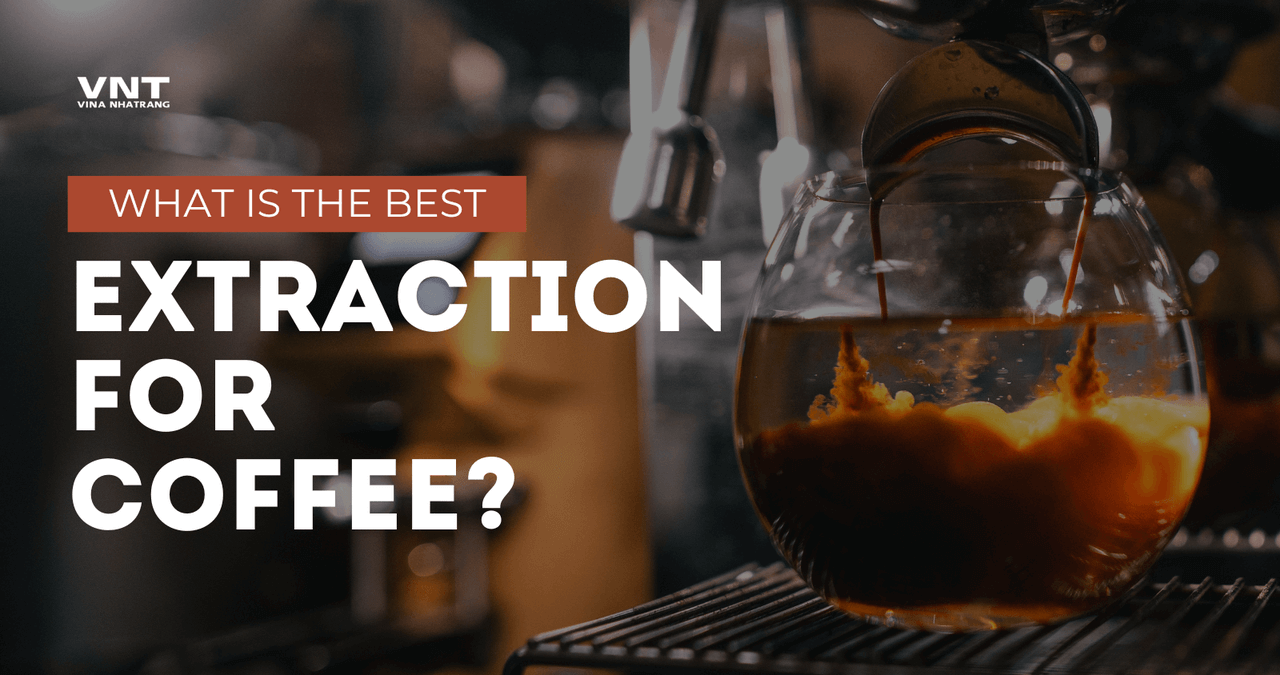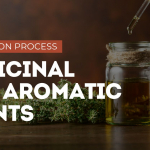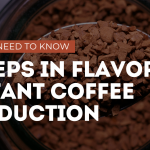Achieving the perfect coffee shot is the holy grail for coffee enthusiasts and baristas alike. While various factors contribute to the final taste, the extraction process plays a pivotal role in unlocking the true essence of the coffee beans. This blog post delves into the art of mastering coffee extraction, equipping you with the knowledge and techniques to craft an exceptional espresso consistently.
Want to learn more about Instant Coffee Processing? Check out the machines in our Instant Coffee Processing System
Understanding Coffee Extraction
Coffee extraction refers to dissolving the flavorful compounds in roasted coffee beans using hot water. The heat applied during roasting triggers chemical reactions like the Maillard reaction and caramelization, developing the rich flavors and aromas we expect from coffee. These reactions break down carbohydrates, proteins, and lipids, forming desirable acids, sugars, oils, and aromatic compounds that give each coffee variety its unique taste profile.
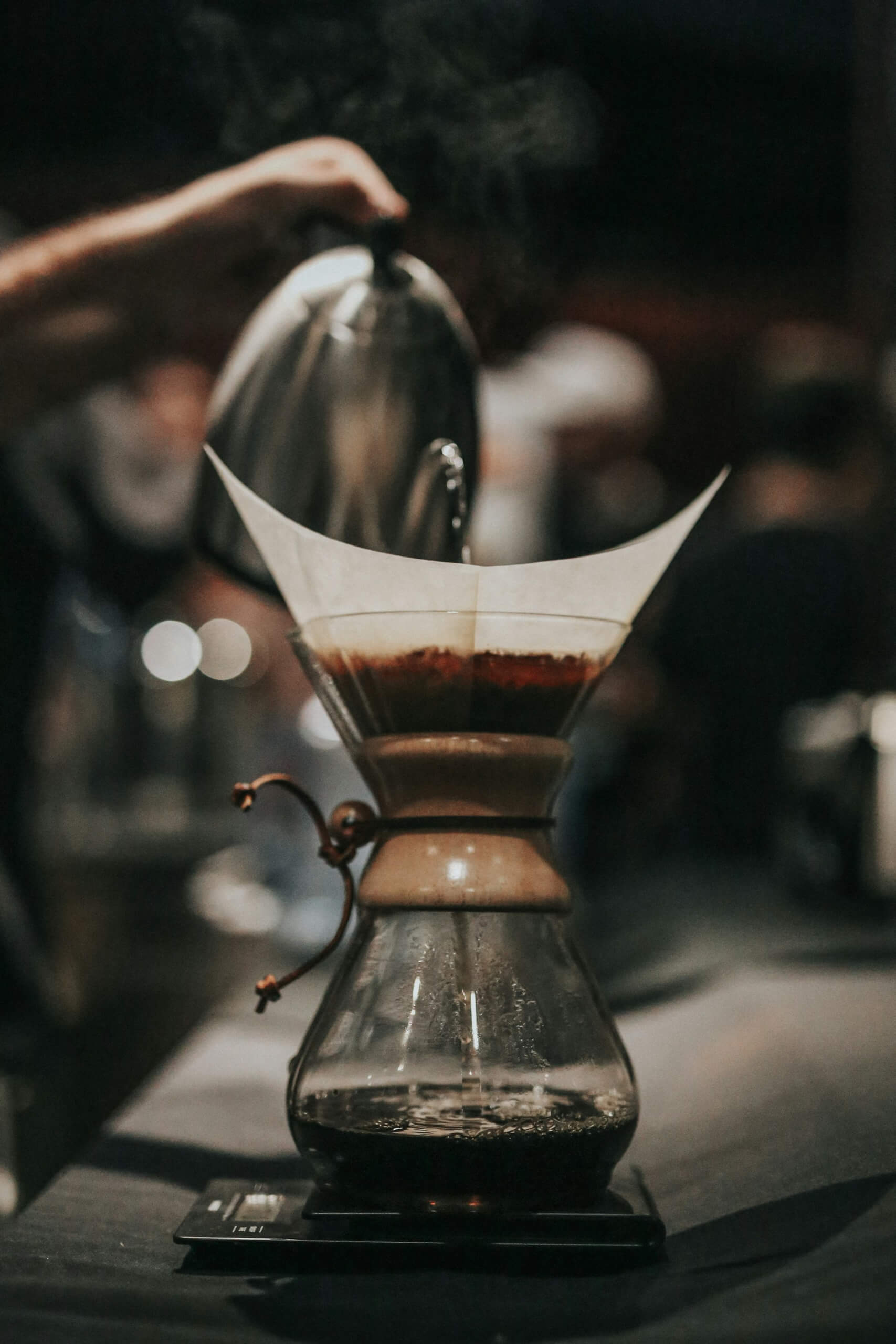
Understanding Coffee Extraction
Proper extraction aims to selectively dissolve and concentrate the appealing flavor compounds while avoiding under-extraction (resulting in sour, underdeveloped flavors) or over-extraction (leading to bitter, astringent tastes from undesirable tannins and harsh acids). Grind size, water temperature, brew ratio, and brew time influence the extraction efficiency. Mastering these variables allows extracting the full flavor potential locked within the beans.
Barista Techniques for Optimal Extraction
While grinder adjustments and machine settings are important, skilled baristas understand there’s more to optimal extraction. One crucial technique is monitoring the espresso stream’s color, which indicates the extraction level. Baristas aim for a light tan or “blonde” hue, as this signals the desirable flavors like bright acids and sweet sugars are being extracted. As the shot continues pulling, the stream darkens to reddish-brown, meaning increasingly bitter compounds are being released.
Experienced baristas watch for this color transition and terminate the shot when the stream reaches the ideal light tan shade. This ensures capturing the coffee’s optimal flavor balance. In addition to color, they assess the flow rate and texture – a smooth, syrupy stream suggests proper extraction. Baristas also employ techniques like pre-infusion, gently introducing water before full pressure, to promote even, controlled extraction.
Explore more: What are the methods of coffee extraction?
The Role of Color in Extraction
The color of the espresso stream directly correlates with the level of extraction. As the shot progresses, the color transitions from a light tan or “blonde” hue to a darker, reddish-brown shade. This transition is known as the “extraction space.” Understanding its relationship with factors like shot time, volume, and grind size is essential for achieving the perfect extraction.
During the initial light tan phase, desirable compounds like acids and sugars are being extracted, representing the ideal “sweet spot” of balanced, vibrant flavors. As the stream darkens, bitter tannins and harsh acids start releasing, signaling over-extraction territory. The extraction space is a continuum – stop too early and the shot will be sour from under-extraction; go too far into the darker shades and it becomes bitter from over-extraction.
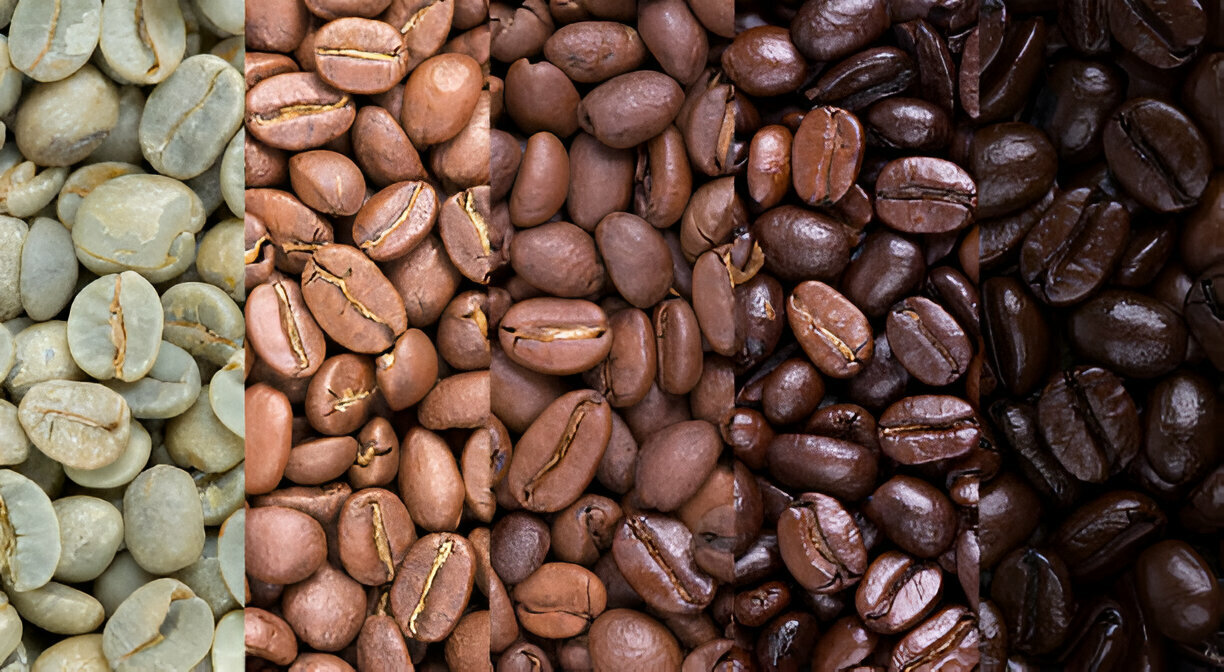
Color change of the espresso stream is used to judge the extraction level and achieve the perfect balance of flavors
The rate of this color transition depends on variables like grind size, dose amount, and tamp pressure. A finer grind speeds up extraction and color change, while a coarser grind slows it down. More coffee in the basket or a firmer tamp increases resistance, prolonging the time to “blonde.” By calibrating these factors, baristas can precisely dial-in the extraction to land in the sweet spot each time.
Mastering this visual art of reading the extraction space through color changes allows baristas to make informed adjustments and consistently produce outstanding espresso shots at the perfect extraction level.
Adjusting Grind Size Based on Desired Shot Characteristics
Grind size plays a crucial role in controlling the extraction process. A finer grind increases the total surface area of the ground coffee particles exposed to water, facilitating quicker and more efficient extraction. However, if not managed properly, this rapid extraction can lead to over-extraction, resulting in an unpleasantly bitter and astringent espresso. Conversely, a coarser grind slows down the extraction process, potentially leading to under-extraction and a sour, underdeveloped flavor profile if the shot is not pulled for a sufficient duration.
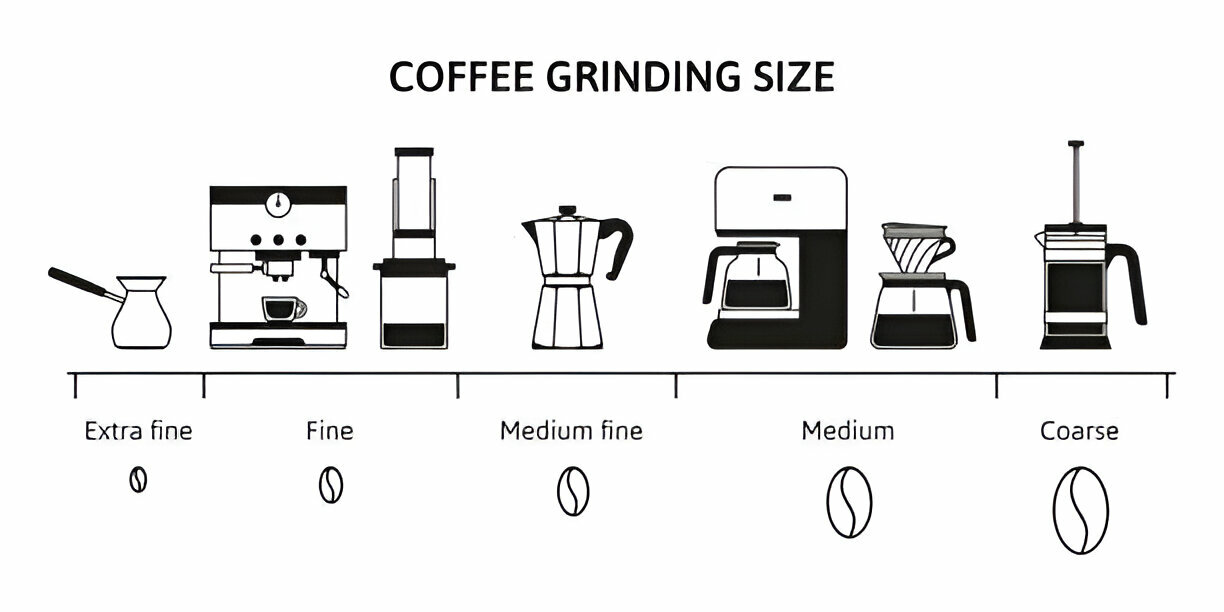
Grind size controls extraction speed: finer for stronger (avoid bitter), coarser for weaker (avoid sour)
Adjusting the grind size is one of the primary tools baristas use to achieve their desired shot characteristics and flavor balance. If the espresso is tasting sour or lacking in body and sweetness, the grind size should be reduced (made finer) to increase extraction. Conversely, if the shot is exhibiting harsh, bitter notes, indicating over-extraction, the grind size should be increased (made coarser) to slow down the extraction rate.
It’s important to note that adjusting the grind size will also affect the resistance to water flow through the coffee puck, impacting shot volume and timing. This is where Al’s Rule, named after renowned coffee expert Al Bryson, comes into play. Al’s Rule suggests that for every grind size adjustment, the shot volume should be adjusted in the opposite direction to compensate and maintain consistent extraction levels.
For example, if the grind is made finer to increase extraction, the shot volume should be reduced to prevent over-extraction. Conversely, if the grind is made coarser to reduce extraction, the shot volume should be increased to ensure sufficient extraction occurs. This rule helps baristas fine-tune their adjustments and achieve a well-balanced shot regardless of grind size changes.
Explore more: What Are The Principles of Coffee Extraction?
Utilizing the ‘Rule of Thirds’ for Quick Corrections
The distribution of flavors throughout the espresso extraction process follows a predictable pattern known as the “Rule of Thirds.” The first third of the shot is characterized by bright, vibrant acidity as the initial compounds are dissolved from the coffee grounds. The middle third is where the sweetness and body-building flavors are extracted, contributing to a balanced and pleasing mouthfeel. Finally, the final third of the shot brings out the bitter compounds and harsher flavors associated with over-extraction.
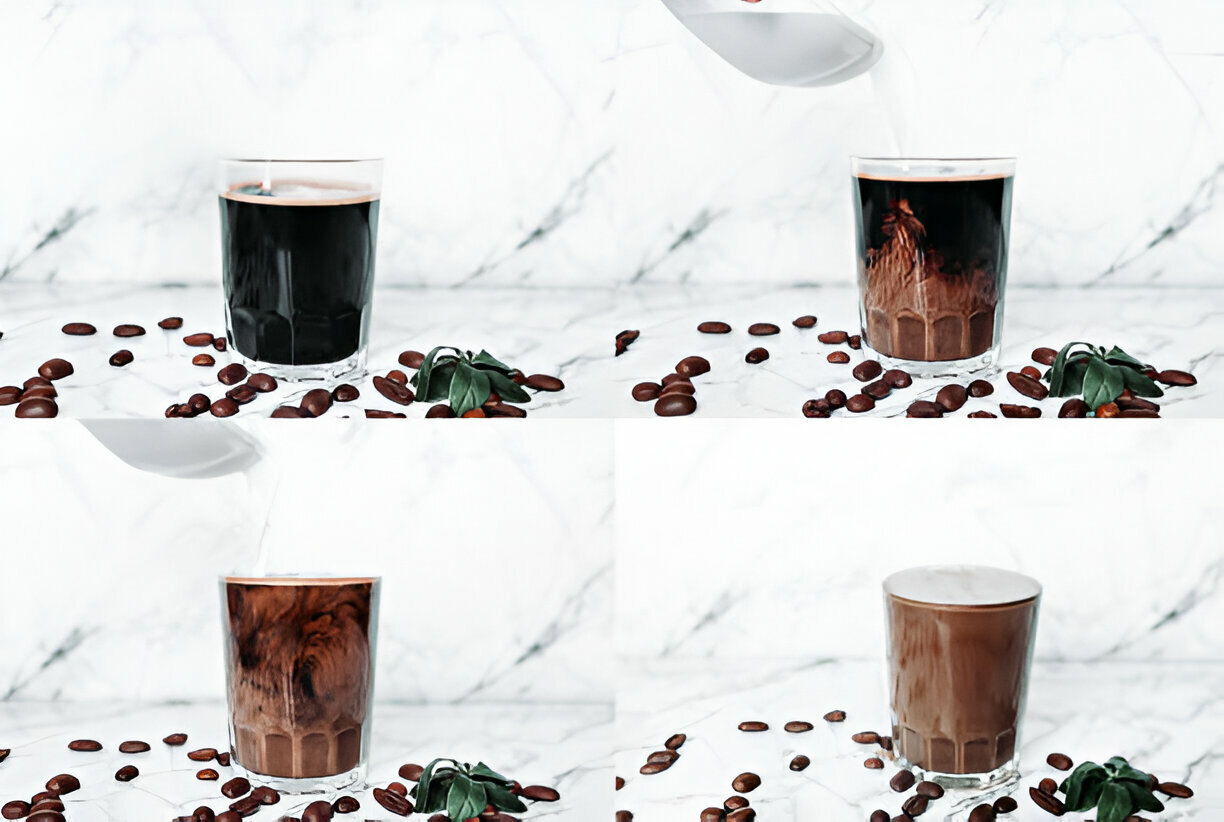
The “Rule of Thirds” helps baristas adjust shot time to balance flavors by recognizing where acidity, sweetness, and bitterness appear during extraction.
By understanding this distribution of acidity, sweetness, and bitterness throughout the extraction, baristas can quickly identify and correct any imbalances in their shots. If the espresso is tasting sour or underdeveloped, it likely means the shot was stopped too early, failing to extract the desirable sweetness from the middle third. In this case, the barista can simply let the next shot run slightly longer to capture more of the sweet, balanced flavors.
Conversely, if the shot is lacking in brightness and acidity, indicating it was pulled too long, the barista can shorten the shot time to emphasize the vibrant flavors from the initial third of the extraction. This quick adjustment can help reintroduce the missing acidity and liveliness to the espresso.
Finally, if the shot is tasting overly bitter or astringent, it’s a sign that the extraction has progressed too far into the final third, extracting an excessive amount of harsh, undesirable compounds. To correct this, the barista can halt the extraction earlier, cutting the shot off before these unpleasant flavors become too pronounced.
The Rule of Thirds provides baristas with a simple yet effective framework for quickly identifying and addressing any imbalances in their espresso shots. By understanding the flavor distribution throughout the extraction process, they can make on-the-fly adjustments to shot time, effectively dialing in the perfect balance of acidity, sweetness, and body without the need for major grind size or dose changes.
Additional Factors Influencing Extraction Quality
While grind size and shot color monitoring are crucial for controlling extraction, several other variables can significantly impact espresso shot quality. Temperature and pressure deviations from the ideal ranges can disrupt proper extraction, leading to under or over-extracted flavors.
Brew temperature ideally falls between 195-205°F (91-96°C). Too low results in under-extraction, failing to dissolve desired compounds, while excessive heat causes over-extraction and bitterness. Similarly, insufficient brew pressure under 9 bars yields weak, underdeveloped shots lacking body. Excessive pressure over 15 bars drives over-extraction. Fluctuating pressure mid-shot can also cause channeling and uneven extraction.
The coffee blend itself also dictates ideal extraction parameters. Lighter roasts may need finer grinds and longer shots to fully develop, while darker roasts could require coarser grinds and shorter pulls to avoid harsh bitterness. Even minor blend changes necessitate adjusting grind, dosing, and volumes.
Contact our experts to get a consultation on choosing the best Instant Coffee Extraction System that fits you business needs
Conclusion
Mastering coffee extraction is a journey that combines scientific principles with artistic flair. By understanding the role of color in extraction, adjusting grind size, applying the Rule of Thirds, and accounting for additional factors, you can unlock the full potential of your coffee beans and consistently craft an espresso that tantalizes the senses. Experiment, refine, and discover your perfect extraction style – the ultimate reward is a rich, flavorful espresso that will leave a lasting impression on your palate.
